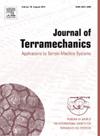地面车辆机动性设计中的建模和仿真基础 I 部分:东方方法
IF 3.7
3区 工程技术
Q3 ENGINEERING, ENVIRONMENTAL
引用次数: 0
摘要
几十年来,各国在军用车辆建模与仿真(M&S)方面形成了不同的方法、基本原理和表达方式,这是地面车辆机动性设计的核心组成部分。1991 年苏联解体之前,世界在政治上被划分为西方和东方,这不利于双方研究人员和工程师之间的合作,因此,他们创造并实践了各自的方法。乌克兰战争迫切需要对东西方技术范式的起源和本质进行分析,由于概念上与地面车辆机动性不同,东西方的技术范式预先决定了各自地区车辆 M&S 方法和技术的发展,特别是在研究车辆与严重不确定地形的动态相互作用时,这种相互作用会影响车辆的行为和性能,从而可能促进任务的完成,也可能导致任务失败。此外,对技术范例的分析旨在进一步推进美国陆军 2019 年现代化战略中描述的下一代战车的 M&S 基础知识。本文第一部分介绍了东方方法,第二部分介绍了西方方法。本文章由计算机程序翻译,如有差异,请以英文原文为准。
Modelling and simulation fundamentals in design for ground vehicle mobility part I: Eastern approach
For many decades, different approaches, fundamentals, and expressions have been developed in various countries for military vehicle modelling and simulation (M&S) as a core component of ground vehicle design for mobility. The political division of the world into the West and East that existed before the Soviet Union breakdown in 1991 had not facilitated collaboration between researchers and engineers of both sides, and, thus, they created and practiced their own approaches. The war in Ukraine urgently prompted analysis of the origins and essence of the Western and Eastern technical paradigms, which being conceptually different to ground vehicle mobility, had predetermined the development of vehicle M&S methods and techniques in their parts of the world, specifically for studying dynamic interactions of vehicles with severely uncertain terrains, which impact vehicle behavior and performance, and, thus, may either facilitate mission accomplishment or lead to its failure. Furthermore, this analysis of the technical paradigms aims to further advance M&S fundamentals for next generation combat vehicles as described in the U.S. Army’s 2019 Modernization Strategy. Part I of this article considers the Eastern approach and the Western approach is presented in Part II.
求助全文
通过发布文献求助,成功后即可免费获取论文全文。
去求助
来源期刊

Journal of Terramechanics
工程技术-工程:环境
CiteScore
5.90
自引率
8.30%
发文量
33
审稿时长
15.3 weeks
期刊介绍:
The Journal of Terramechanics is primarily devoted to scientific articles concerned with research, design, and equipment utilization in the field of terramechanics.
The Journal of Terramechanics is the leading international journal serving the multidisciplinary global off-road vehicle and soil working machinery industries, and related user community, governmental agencies and universities.
The Journal of Terramechanics provides a forum for those involved in research, development, design, innovation, testing, application and utilization of off-road vehicles and soil working machinery, and their sub-systems and components. The Journal presents a cross-section of technical papers, reviews, comments and discussions, and serves as a medium for recording recent progress in the field.
 求助内容:
求助内容: 应助结果提醒方式:
应助结果提醒方式:


